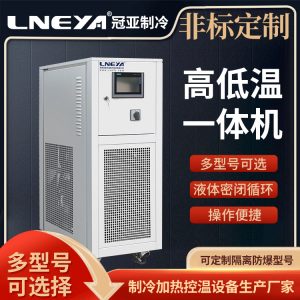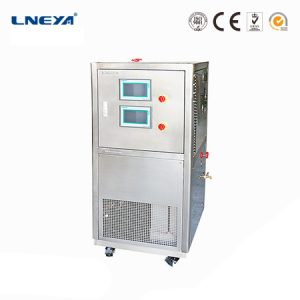The Method That Small Water Cooled Chiller Needs To Follow When Charging Refrigerant
In our life, we believe that everyone is very familiar with refrigeration. In the central air conditioning and industrial production process cooling industry, small water cooled chiller is more common. This unit is composed of a compressor in the fuselage, a horizontal shell and tube condenser, an evaporator, a thermal expansion valve, and some related parts. Under the cooperation of these auxiliary parts, the overall small water cooled chiller is compact in structure, convenient in operation and control, and is popular among the public in the market.
For refrigeration systems that do not have a high pressure reservoir and a low pressure vapor-liquid separator, the control of refrigerant charge is particularly important. Because the refrigeration system is a condenser and also acts as a high-pressure reservoir, the refrigerant is stored in the condenser, and the condenser is cooled. The heat dissipation area is reduced and the condensing pressure is increased, resulting in a decrease in cooling capacity.
For the control of the refrigerant charge of such small water cooled chillers, the following methods are followed during the filling process:
First, touch the temperature of the condenser casing.
The upper outlet of the condenser outlet is heated above the outlet, and the outlet below the outlet is cool. (There is a description of the high temperature exhaust of the compressor in the inside. The cooling indicates that the small water-cooled chiller is a liquid space.)
Second, look at the inspiratory pressure.
Corresponding to the temperature of the refrigerant water in the evaporator. (That is, corresponding to the evaporation temperature.)
Third, look at the compressor return pipe temperature.
The high-temperature unit return pipe should be cooled and dew, but it can be dew condensation to the compressor return valve; the low-temperature unit return pipe should be frosted, but the frost can be connected to the compressor return valve. If condensation or frost builds up on the compressor casing, liquid refrigerant will enter the crankcase, causing the compressor to run back and cause liquid problem.
Raccomandazioni correlate
-
What type of temperature control system is required for smear preparation in the pharmaceutical industry?
853In the pharmaceutical industry, negative pressure drying and smear preparation have specific requirements for temperature control, and usually require precise and adjustable temperature control devices to ensure product quality and process sta...
Visualizza i dettagli -
Application of gas cooling temperature control system in optical module
992The gas cooling temperature control system has a wide range of temperatures and can be widely used to meet the requirements of more production and engineering environments. It is applicable to reliability tests such as chip, microelectronic devi...
Visualizza i dettagli -
Manuale di manutenzione giornaliera del circolatore di riscaldamento a refrigerazione chiusa
1311The closed refrigeration and heating circulators of different manufacturers have a certain life span. Reasonable and correct operation and maintenance of the closed refrigeration heating circulator can effectively extend the service life. The user...
Visualizza i dettagli -
Vocs gas condensation recovery unit processing instructions
1291With the continuous inspection of environmental protection, Wuxi LNEYA VOCS gas condensation recovery device has also received continuous attention from the public. Most chemical, pharmaceutical and industrial industries are urgently dealing with ...
Visualizza i dettagli
 Refrigeratori industriali LNEYA Produttore Fornitore
Refrigeratori industriali LNEYA Produttore Fornitore













